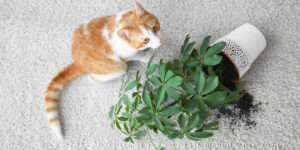
Indoor Vine Plants: A Comprehensive Guide
Indoor vine plants have become increasingly popular in home decor, offering a blend of aesthetic appeal and functional benefits. Their trailing and climbing nature allows them to transform spaces, adding greenery and life to otherwise dull environments. This article explores various aspects of indoor vine plants, including their types, care requirements, benefits, and more.
Table of Contents
- Introduction to Indoor Vine Plants
- Types of Indoor Vine Plants
- 2.1 Pothos
- 2.2 Philodendron
- 2.3 English Ivy
- 2.4 Hoya
- 2.5 String of Hearts
- Benefits of Indoor Vine Plants
- Care and Maintenance
- 4.1 Light Requirements
- 4.2 Watering Needs
- 4.3 Soil and Fertilization
- 4.4 Pruning and Training
- Common Issues and Solutions
- Creative Ways to Display Indoor Vines
- Conclusion
- FAQ Section
1. Introduction to Indoor Vine Plants
Indoor vine plants are characterized by their long, trailing stems that can either climb or cascade down from pots or shelves. These plants not only beautify indoor spaces but also improve air quality by filtering toxins from the environment.
Characteristics of Indoor Vine Plants
- Growth Habit: They can be trailing or climbing, making them versatile for various display options.
- Leaf Shapes: Leaves can vary significantly in shape, size, and color, adding visual interest.
- Adaptability: Many indoor vines thrive in low light conditions, making them suitable for various indoor environments.
2. Types of Indoor Vine Plants
Several varieties of indoor vine plants are popular among enthusiasts due to their unique characteristics and ease of care.
2.1 Pothos (Epipremnum aureum)
Pothos is one of the most popular indoor vine plants due to its resilience and low maintenance requirements.
- Light: Thrives in low to bright indirect light.
- Watering: Water when the top inch of soil is dry.
- Toxicity: Mildly toxic to pets if ingested.
2.2 Philodendron
Philodendrons are known for their heart-shaped leaves and adaptability to different lighting conditions.
- Light: Prefers bright indirect light but can tolerate low light.
- Watering: Allow the soil to dry out between waterings.
- Toxicity: Toxic to pets if consumed.
2.3 English Ivy (Hedera helix)
English Ivy is a vigorous climber that can cover walls or trellises quickly.
- Light: Prefers bright indirect light but can adapt to lower light conditions.
- Watering: Keep the soil consistently moist but not soggy.
- Toxicity: Toxic to pets and humans if ingested.
2.4 Hoya (Hoya carnosa)
Hoya, also known as wax plant, features thick, waxy leaves and produces fragrant flowers.
- Light: Enjoys bright indirect light.
- Watering: Allow the soil to dry out between waterings.
- Toxicity: Non-toxic to pets.
2.5 String of Hearts (Ceropegia woodii)
This charming plant has heart-shaped leaves and is perfect for hanging baskets.
- Light: Prefers bright indirect light.
- Watering: Water when the soil is dry; drought-tolerant.
- Toxicity: Non-toxic to pets.
3. Benefits of Indoor Vine Plants
Indoor vine plants offer numerous benefits beyond their decorative appeal:
- Air Purification: Many vine plants help filter harmful toxins from the air, improving indoor air quality.
- Aesthetic Appeal: Their trailing vines add texture and depth to interior spaces.
- Space Utilization: Ideal for small spaces as they draw the eye upward and maximize vertical space.
4. Care and Maintenance
Proper care is essential for keeping indoor vine plants healthy and vibrant.
4.1 Light Requirements
Most indoor vine plants prefer bright indirect light but can adapt to lower light conditions:
| Plant Type | Light Preference |
|---|---|
| Pothos | Low to bright indirect |
| Philodendron | Bright indirect |
| English Ivy | Bright indirect |
| Hoya | Bright indirect |
| String of Hearts | Bright indirect |
4.2 Watering Needs
Understanding watering needs is crucial:
- Water when the top inch of soil feels dry.
- Avoid overwatering as it can lead to root rot.
4.3 Soil and Fertilization
Use well-draining potting soil for best results:
- Fertilize during the growing season (spring and summer) with a balanced fertilizer every month.
4.4 Pruning and Training
Regular pruning encourages bushier growth:
- Pinch back long stems to promote branching.
- Use trellises or hooks for climbing varieties.
5. Common Issues and Solutions
Indoor vine plants may encounter several common issues:
| Issue | Symptoms | Solution |
|---|---|---|
| Yellow Leaves | Overwatering | Reduce watering; ensure proper drainage |
| Leggy Growth | Insufficient light | Move plant to a brighter location |
| Pest Infestation | Visible pests (aphids, spider mites) | Treat with insecticidal soap or neem oil |
6. Creative Ways to Display Indoor Vines
Displaying indoor vines creatively can enhance your home decor:
- Hanging Baskets: Perfect for trailing vines like Pothos or String of Hearts.
- Wall Planters: Use wall-mounted planters for climbing varieties like English Ivy.
- Shelves: Place pots on shelves where vines can cascade down.
7. Conclusion
Indoor vine plants are an excellent choice for anyone looking to add greenery to their home while reaping the benefits of improved air quality and aesthetic appeal. With a variety of options available, it’s easy to find the perfect vine plant that fits your space and lifestyle.
FAQ Section
Q1: How often should I water my indoor vine plants?
A1: Water when the top inch of soil feels dry; this usually varies from once a week to every two weeks depending on the plant type and environmental conditions.
Q2: Are indoor vine plants safe for pets?
A2: Some indoor vine plants are toxic to pets (e.g., English Ivy), while others like Hoya and String of Hearts are non-toxic.
Q3: Can I grow indoor vines in low light?
A3: Yes, many indoor vines like Pothos and Philodendron thrive in low light conditions, making them suitable for various indoor environments.For more detailed information on houseplants, you can visit Wikipedia.


